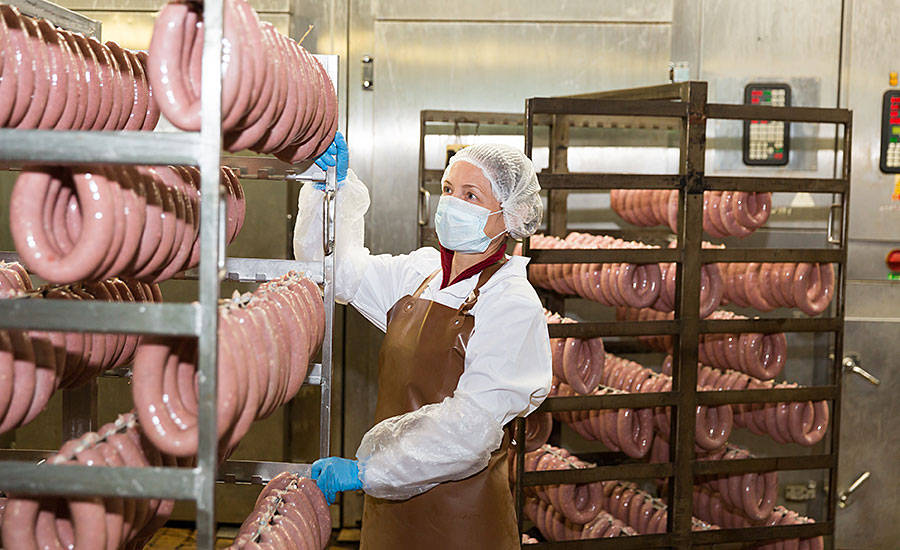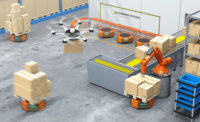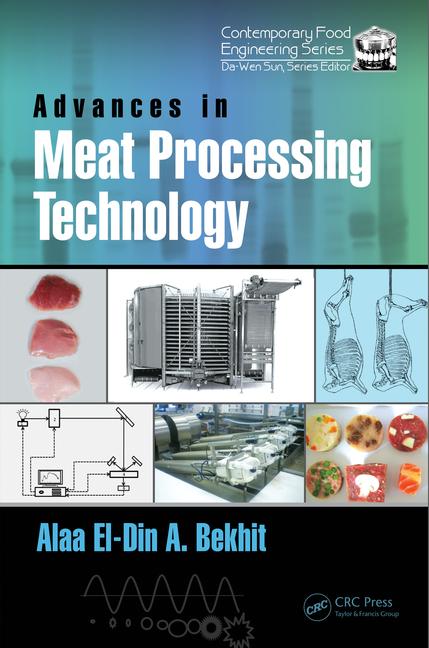Employee Matters
Addressing workplace ergonomics in the meat processing industry
Protecting your 'industrial atheletes'

Ergonomics is a word that is increasingly bandied around by marketing departments in many industries. Advertisements tout “ergonomically” designed automotive interiors, headphones, mattresses, pillows and even cookware. But our industry, meat processing, has actively addressed the art and science of ergonomics for decades.
In the late 1980s, several major meat processors were fined by the Occupational Safety and Health Administration (OSHA) for exposing workers to risks associated with cumulative trauma disorders. Since there was, and still is not a comprehensive code within the Code of Federal Regulations (CFR), action was filed under the general duty clause. Not having a specific regulation for these illnesses, an attempt was made to establish a standard addressing cumulative trauma disorders. The American National Standards Institute engaged the Z-365 Committee to establish a standard, Control of Work-Related Cumulative Trauma Disorders (CTDs).
Medical experts, insurance companies, academia, subject matter experts, union representatives and industry stakeholders labored for years to develop a comprehensive standard. As a member of this committee representing equipment manufacturers, I quickly became aware it would have little chance for completion, given too many polarizing stakeholders as well as the multiple contributing factors to the illness defined as CTDs.
Fast-forward to our current environment and ask, “What has changed in 30 years?” Significant changes continue to address and improve the workplace environment. Organizations continue to address labor opportunities to not only match tasks with individuals but to educate all stakeholders to the value of ergonomics in the workplace. Five key areas have provided strides to address the issues of CTDs in the meat industry. First, CTDs are illnesses and multifaceted. Second, training of all personnel regarding risk factors are needed and beneficial. Third, once illnesses have been identified and diagnosed, interventions are needed. Fourth, a thorough workplace assessment needs to be conducted. Fifth, equipment, tools and production line manufacturers continue to apply science to develop tools and workstations for workers’ comfort and reduced exposure risks.
CTDs cover a wide spectrum
The illnesses of tenosynovitis, vibration white finger, trigger finger and carpal tunnel syndrome have been lumped together under the terminology CTDs. Studies have shown the environment (work and leisure), anatomy and biological factors contribute to various risk exposures. Environmental factors such as temperature, activity, repetition, rate, noise and vibration can contribute to risks. Anatomical and biological factors such as age, gender, wrist squareness, diabetes and other individual human attributes can also contribute to risks. It is important to educate all personnel regarding these risk factors before they start work. Orientation and training cannot be overlooked as a key element to hiring and sustaining a healthy workforce.
Orientation and training
An easy management catch-all is, “We need more training.” When any event occurs, the default to corrective action is training. Training is only as good as the time, material, comprehension and consistency of the learning platform and perceived importance by those being instructed. Our industry presents numerous challenges for training. Multiple languages, literacy, comprehension levels and attitude of participants are found in meat-processing facilities.
What is the goal of training? For some, it is making sure boxes are checked off. Others truly have a desire to expand knowledge and assist workers. Both regulatory requirements and advancement of workers’ knowledge can be achieved if proper tools are selected. One type of training does not fit all organizations’ needs. An easy path is to find a “canned” training program to meet your internal requirements, but do these generic programs help or improve workers’ understanding of CTD risks? Each organization should construct training programs that meet the needs of regulations but are designed to advance the education and ultimately the safety and health of all workers.
Proactive intervention
It may be challenging to pay up front for risk-aversion measures. These costs may not have the direct ROI of other investments, but those costs can pay off in the form of preventing long-term costs related to medical costs, workers compensation costs and potential legal actions. I would argue that investing in orientation and safety can reduce costs of turnover and illnesses associated with CTDs.
So how can one justify costs of intervention programs? Simply look at your costs of medical, risk mitigation, lost productivity and accrue. These costs have a direct relationship to the OSHA 300 logs, trends in reported illnesses and lost and restricted workdays.
Certain screening tools can be used to identify risks, such as non-invasive nerve conduction testing, a tool I used to screen candidates. Such tests provided valuable information to medical staff and hiring personnel to identify candidates who had a slowing of the median nerve conductivity. Multiple individual factors could contribute to the slowing of the nerve as indicated by a study by Dr. Peter Nathan. This is just one tool that organizations can deploy to enhance screening candidates in addition to workplace assessments.
Workplace assessment
Workplace assessments can provide a vast amount of useful information, not only for ergonomic purposes but also for safety analysis, work flow and process evaluation. Many organizations have internal subject matter experts (SMEs) that perform job safety analyses, risk assessments and ergonomics task evaluations. Other organizations may choose to use one of many third-party consultants to perform workplace assessments. In any case of engagement with SMEs, it is critical all stakeholders are committed to the process of workplace improvement and sustainability.
Many tools are available to assess the workplace for risks that may be present in the physical environment. But a major factor is to evaluate the individual for potential risks. A number of research papers have identified and concluded that risks associated with CTDs have a variety of causes. Understanding this aspect of these illnesses has led equipment and tool manufacturers to address and modify designs, thus reducing some risks.
Equipment and tools
Not all workers are created the same. It is impossible to customize everything to fit the entire working population. Manufacturers have made great strides in accommodating the anatomical spectrum of the workforce. If you go onto the floor of any meat-processing facility, you will see a unique variety of physical constructs of individuals. Each person brings his or her inherent risks to the workplace, and the engineers, designers, process developers are challenged to create an environment in which task-related risks can be minimized or eliminated.
Conclusion
I recall a phrase used to describe production workers in the meat industry by a pioneer of the ergonomic movement in the meat industry decades ago: “Workers should be considered industrial athletes.” Think about the importance of properly conditioning, stretching and training to perform the best each day while taking care of workers’ physical and mental well-being. It is true that not everyone in the workplace may adhere to good practices when taking care of their own health, but as an industry we can provide a safe and healthy environment to minimize risks and strive to be a leading industry that addresses ergonomic issues. NP
Looking for a reprint of this article?
From high-res PDFs to custom plaques, order your copy today!








